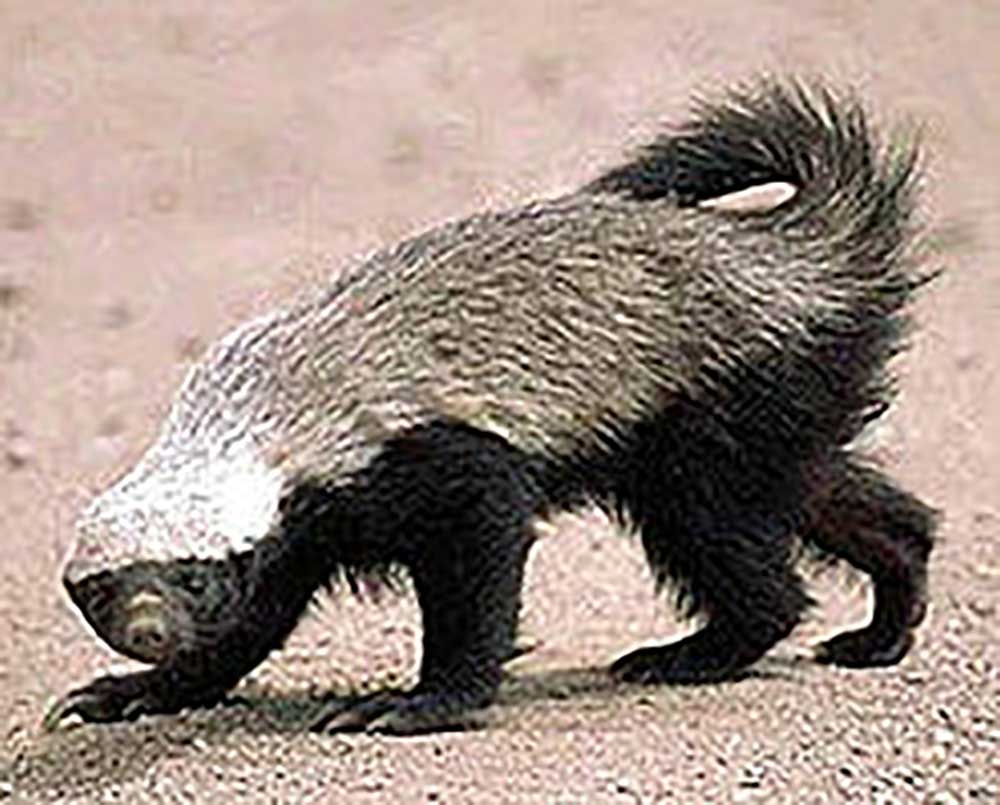
Name: Honey Badger, Ratel
Common name: Honey Badger, Ratel
Local name: Al Zerembal/ Zerban/ Thernban
Scientific name: Mellivora capensis
Nature Reserves: Irkaya
Size: 78
Habitat:
Honey Badgers live alone in self-dug holes and can be found in very arid hot areas. The honey badger possesses an anal pouch. The smell of the pouch is reportedly suffocating, and may assist in calming bees. They have been known to savagely and fearlessly attack almost any kind of animal when escape is impossible, reportedly even repelling much larger animals such as lions.
Habits:
Although mainly nocturnal, they can also be active during the day. Honey badgers have a very broad diet. They are mainly carnivorous and will eat rodents, lizards, snakes, birds, eggs, and insects. Their thick, loose skin gives protection against snake bites. They will also eat fruit and vegetables such as berries, roots and bulbs. They are skilled diggers, able to dig lizard burrows to eat them. However, they also favor bee honey, and will often search for beehives to get it, which earns them their name.
Honey Badger gestation lasts six months, usually resulting in 2 cubs.
Distribution:
In Qatar: Sightings have been reported from South Wakra, Zuwair, Ilham, Al Haym south west Al Shammal. It was also found in Al Amerya near Saudanatheel and in Karaana and Nakhsh, and south Nesranya. They are endangered in Qatar.
Description:
Length: 78-93 cm, Tail length: 19-25 cm, Weight: 6-12 kg
The Honey Badger has a long, heavily built body. The fur is completely black on the underside, cheeks and muzzle. The top of the head, back and flanks are white. The head is small and flat, with a short muzzle. The eyes are small, and their tiny ears are little more than ridges on the skin. The Honey Badger has short and sturdy legs, with the front feet armed with long and strong claws.







